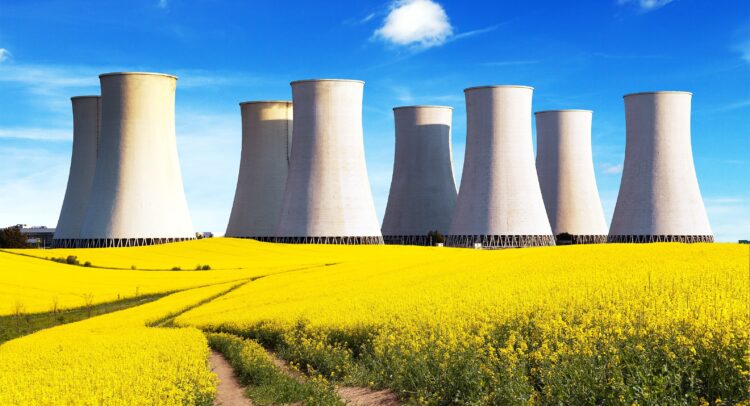Exchange-Traded Funds (ETFs) that seek to correlate with the price movements of uranium are generating red-hot demand. The metal, which is required to generate electricity in nuclear power plants, has surged to near its 16-year high due to extremely tight supply and expected increases in demand.
Confident Investing Starts Here:
- Easily unpack a company's performance with TipRanks' new KPI Data for smart investment decisions
- Receive undervalued, market resilient stocks right to your inbox with TipRanks' Smart Value Newsletter
Investors in uranium ETFs are enjoying what may be a prolonged period of gains as their investments closely track these elevated price levels. Additionally, geopolitical factors and ongoing infrastructure improvements are creating a favorable environment for continued price increases.
The Uranium ETF Hot Streak
One large uranium fund, the Global X Uranium ETF (NYSE:URA), which boasts over $3 billion in assets, is benefiting from this uranium hot streak. Just this week, the fund neared its highest close since April 2014. Meanwhile, there seems to be no stopping it; URA has been trending upward for the last six trading days. This dramatic move is its longest run-up in over a year.
Another fund, the Sprott Uranium Miners ETF (URNM), with almost $2 billion in assets, hit a brand-new high on Tuesday—the highest since its launch in 2019. This ETF’s recent hot streak adds to the massive gains it has benefited from due to rising uranium prices over the past year. The cost per pound of uranium has doubled since last summer, spiking to a 52-week high of $106.40 in February before settling around $90 as it again attempts to reach new highs. This is positive for the ETF because higher uranium prices increase the value of the mining companies and assets it holds, leading to greater returns for investors.
Geopolitical Support
An interesting reason analysts expect uranium and related ETFs to keep moving up is political support. Last week, President Biden signed a law limiting how much uranium the U.S. can buy from Russia. This move is expected to tighten domestic uranium supplies available for nuclear power plants. In addition to reducing reliance on Russia, the law also unlocks $2.7 billion in approved spending for nuclear power growth and related initiatives. The lack of Russian production will likely raise prices, as Russia was the third-largest uranium supplier to the U.S. in 2022, after Canada and Kazakhstan.
The ban on buying uranium from Russia, signed into law on May 13, could have dramatic implications. One expectation is that it will push uranium prices back above $100 a pound.
Infrastructure Support
With the increasing demand for nuclear energy, driven by factors such as the rise of artificial intelligence and the consequent surge in power requirements, uranium is poised to play a crucial role in meeting these infrastructure needs. As it turns out, all those data centers crunching AI numbers and storing mountains of data need a ton of electricity. Nuclear energy is expected to help address this need as a reliable power source for these tech giants.
In addition to AI growth, the sustainability mantra is a big deal for tech companies, driving them to explore renewable energy sources to power their data centers. Today, nuclear power is increasingly viewed as a “green” option for these firms, presenting a reliable and robust alternative with a limited carbon footprint.
Key Takeaway
The recent ban on Russian uranium imports, along with the growing demand from the AI boom, is fueling a potential surge in uranium prices. This has been good news for Uranium ETFs like URA and URNM, which track companies involved in uranium mining and exploration.
Looking for a trading platform? Check out TipRanks' Best Online Brokers , and find the ideal broker for your trades.
Report an Issue









